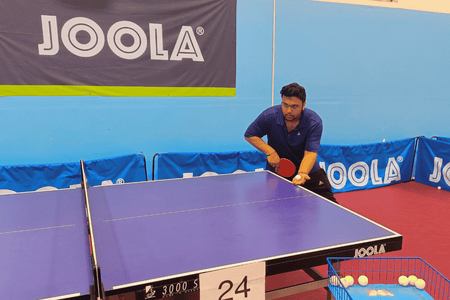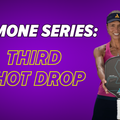
The Many Advantages Gained from a Strong Table Tennis Serve
Table Tennis is a popular sport that is enjoyed by millions of people around the world. While the game is often viewed as a game of speed, accuracy, and agility, one of the most important aspects of Table Tennis is undoubtedly the service. In this blog by ICC's Subham Kundu, we will discuss the importance of developing a strong Table Tennis serve and how it can impact the outcome of a match.
As I have noted, young kids in the United States are more focused on practicing various strokes and more into match practice. This causes them to neglect practicing serves from the beginning of their Table Tennis career. As a result they develop relatively weak services with lack of options and variations to set the momentum of any matches they play.
The main issue is not always a lack of serve practice, but a lack of meaningful and purposeful serve practice. Serve practice should be focused, goal oriented, with measurable outcomes and especially an engaging development process.
These are some of the key advantages that come from developing a stronger service game:
100% Control:
The serve is the first shot of any point. You can structure and plan a point based on your serve and probabilities of how the point might go. There is no incoming ball with the serve. This makes it the table tennis technique which has the least external factors, giving you the maximum control over decision making and execution.
A well executed service can put pressure on the opponent right from the beginning and set the momentum for the rest of the game.
Deception is Key
Where simple serves are obviously easier to read – a well practice and developed serve can be deadly. Mastering visual deceptions in the action can dupe the receiver. In table tennis, there are several different types of service actions. Examples include the hook serve, pendulum and reverse pendulum serve, tomahawk and backhand serves. Each of these serves has its own unique spin, speed, and trajectory. These elements can be cleverly masked during the action in subtle ways.
Forcing your opponent to mis-read any of those elements can have hugely beneficial consequences in a match.
Exploit Weakness
A well-developed service can be used strategically to exploit the opponent's weaknesses. For instance, if the opponent has a weak backhand return or forehand return, the server may choose to serve the ball to the weaker side of the opponent, forcing the opponent to play a shot that they are not comfortable with. The opponent may also exhibit a reluctance to return a ball using a weaker response. If a player has a weak forehand short receive they may opt to push long or try to flick. Anything which helps the server increase the probability of knowing the receiver’s next move can open up a large advantage.
Disrupt the Rhythm and Set the Pace
A smart serve strategy can disrupt the opponent's rhythm. If the server can vary their serve between fast and slow, spin and no-spin, and different locations on the table, they can force the opponent to constantly adjust their positioning and shot selection, making it difficult for them to get into the game. It is worth noting that the serve action and preparation can also change entirely. A player can extend their pre-service routine or use a high toss serve to create a slower rhythm. They can also reduce the time between points and serve long and fast. These can force errors or timing discomfort for the opposition.
Supreme Confidence
The service is an opportunity for the server to gain confidence and momentum. If the server is able to win points directly from their service, they can build momentum and take control of the match. Winning points off serve or with early setups gives you the feeling of having a tactical advantage and being one step ahead. This fills players with confidence and puts extra pressure back on the serve of the opponent. It also helps alleviate some of the pressure in the early stages of games.
In conclusion, while service may not be the most glamorous part of Table Tennis, service practice in Table Tennis is very crucial for developing a strong and versatile game. A strong table tennis serve not only provides immediate point-winning opportunities but also allows players to strategically control over the match, create confusions for opponents, and develop a psychological advantage. It is a critical component of the game that can have a significant impact on the outcome of a match.
I would advise players to practice their serve often and in short, focused intervals. Set goals, measure your success and be creative. Focus on these areas:
- Manage height and length of serve
- Be consistently able to execute your key serves
- Look at ways to improve contact and maximize spin
- Focus on creating deceptive motions
I hope this will help those who read it to understand just how important service can be in our sport. Get out there and develop from comparatively weak or mediocre level service game to having your own strong table tennis serve to give you the advantage in competition!
You can also check out Subham's other article on the importance of multiball training!
Finally, learn more about serves and other techniques and practice drills by downloading the JOOLA Infinity App today!




